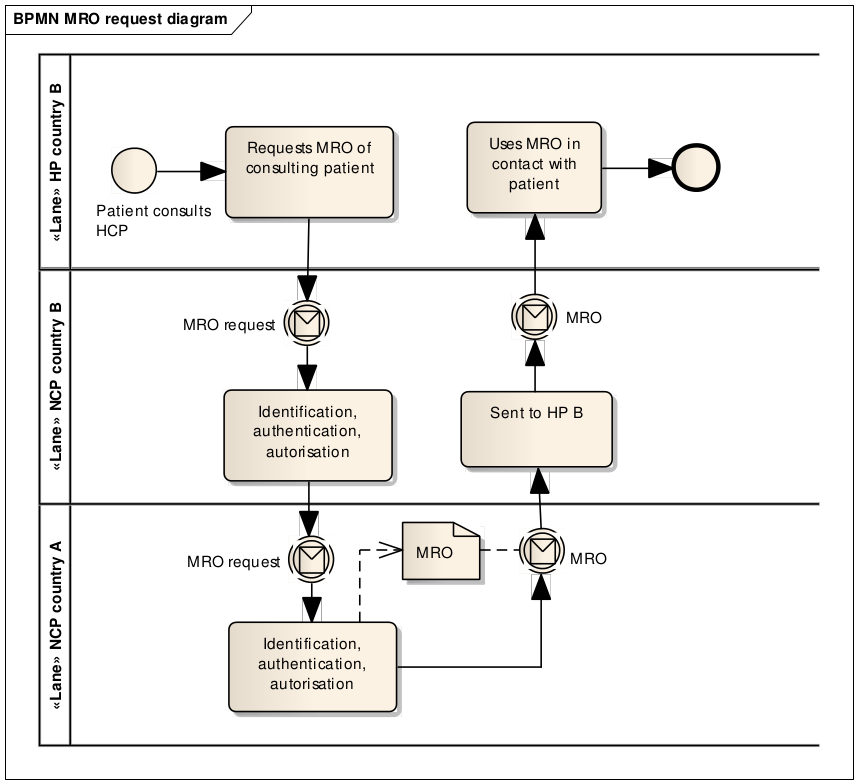...
- The patient, who is referred to (or reports himself to) a physician.
- When the decision is made that the patient has to take medication for treatment the physician, in his role as prescriber, issues a medication prescription that can be seen both as an order to a pharmacist as well as the agreement between the physician and the patient on the specific treatment with this medication. For doing this, the prescriber receives relevant historical medication information.
- The pharmacist, in his role as a dispenser of medication, receives the prescription, in some countries he receives relevant historical medication information, and dispenses the medication. The pharmacist then issues information about the dispensation, which serves two goals: it is added to the historical medication information, and it is used to update the status of the prescription (in some cases it lowers the amount of remaining items that can be given out from the prescription). The patient again, finally, receives the medication and takes care of the administration, with or without the intervention of family members and/or nurses.
2. Requirements
Actions and Steps
...
Service State diagram
Non-Functional Requirements
loremipsumFor Non-Functional requirements please consult the D 1.4.3, page 71;
Legal Requirements
For service legal requirements please consult the D 1.4.3, page 11267;
Security Requirements
For service security requirements please consult the D 1.4.3, page 11468;
Clinical Requirements
For service clinical requirements please consult the D 1.4.3, page 11569.
Additional Architecture NCP / Central Service requirements
For additional Architecture NCP / Central Service requirements please consult the D 1.4.3, page 12272.
3. Implementation Strategy Design
...
